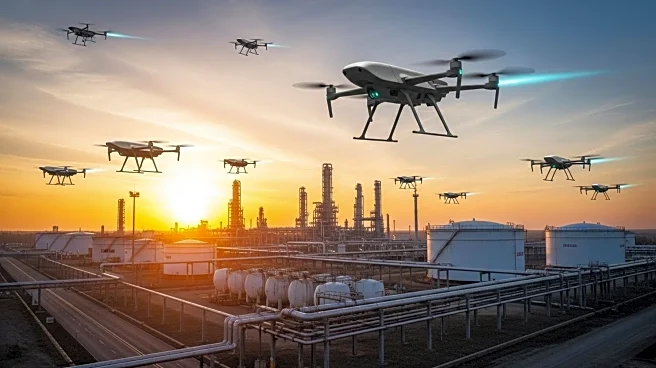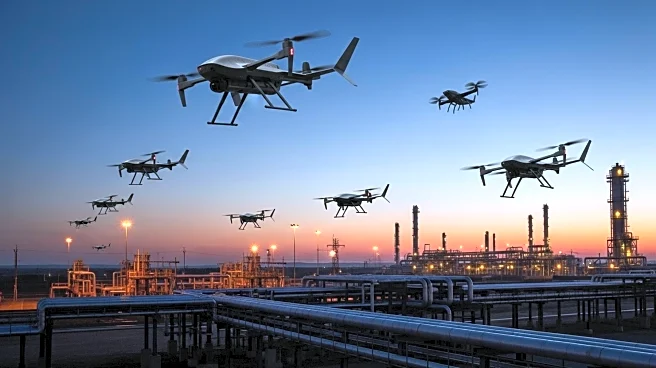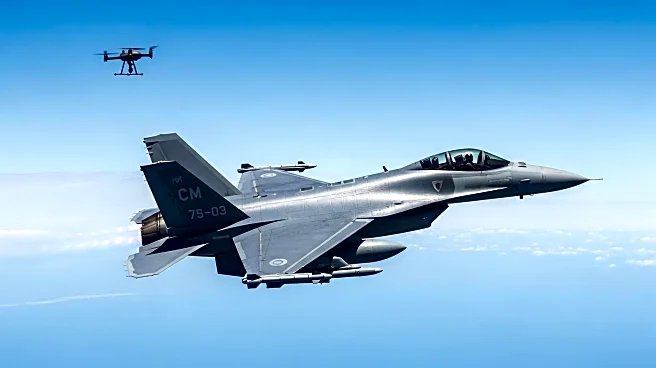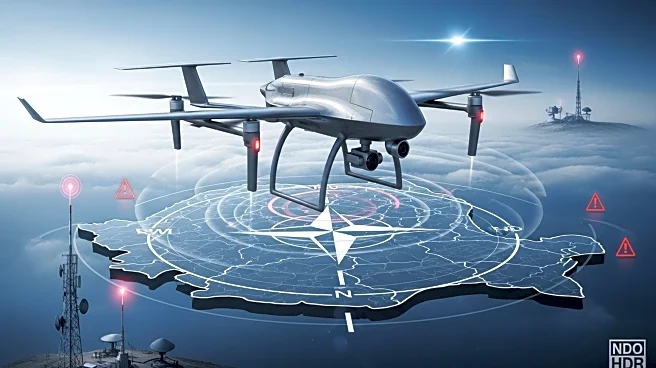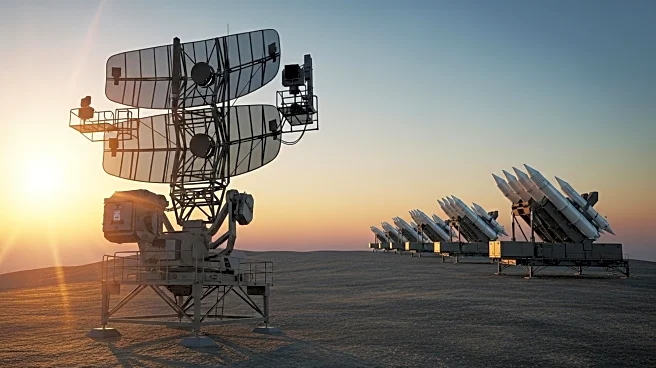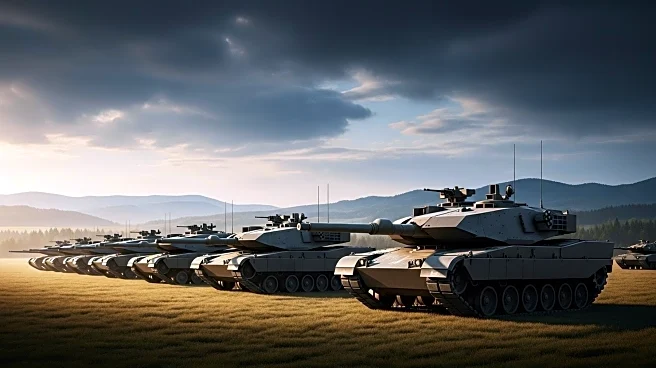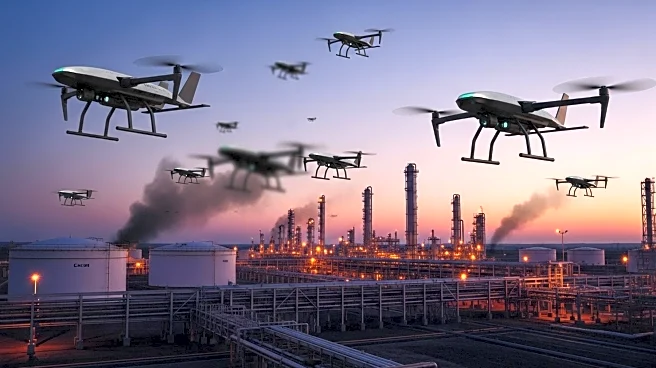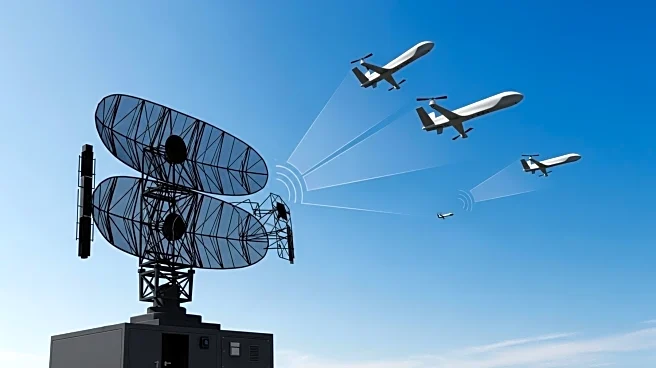What's Happening?
Ukraine has executed one of the largest drone assaults of the ongoing conflict, targeting multiple Russian locations, including the Primorsk oil terminal, Russia's largest facility on the Baltic. The attack also affected the Ust-Luga terminal, with reports of damage to Lukoil facilities. Russian officials claim to have downed 221 Ukrainian drones across various regions. The assault led to air traffic disruptions at St. Petersburg's airport. Ukrainian officials state the attacks are in retaliation for Russia's increased aggression, specifically targeting the oil sector to disrupt economic activities.
Why It's Important?
The escalation in drone warfare marks a significant shift in the conflict, highlighting the strategic importance of targeting economic infrastructure. The attacks on oil facilities aim to cripple Russia's economic capabilities, potentially affecting global oil markets. The international community, including NATO, is closely monitoring these developments, as they could lead to broader geopolitical tensions. The use of drones in warfare underscores the evolving nature of military strategies, with implications for global security and defense policies.
What's Next?
The international response to these developments will be crucial. NATO's involvement, particularly with fighter jets responding to airspace violations, indicates a heightened state of alert. Further sanctions or diplomatic actions against Russia could be considered by Western nations. The situation may lead to increased military support for Ukraine from its allies, as well as potential peace talks to de-escalate the conflict.
